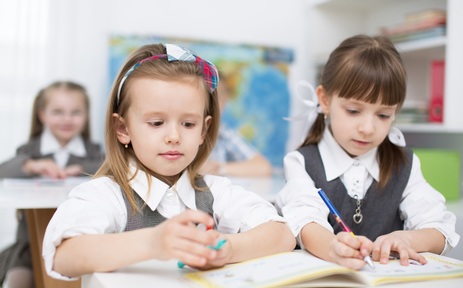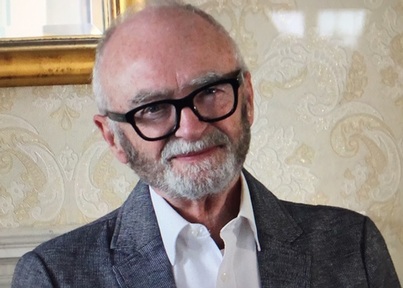Toy guns: 'Children have an innate, inquisitive nature to explore good and bad, right and wrong'
Playing with toy guns is a controversial subject within the early years sector. It can provoke a sharp intake of breath when mentioned in certain company, and many nursery settings adopt a zero-tolerance approach.

Carla Coward, a nursery teacher at Westcourt Primary and Nursery School, recently had a supply teaching assistant whose immediate response to group of children making guns from construction items was, “We don’t do that here.” However, Ms Coward’s response was, “Oh yes we do!”
Over the years, Ms Coward has observed several interactions in nurseries where children are not allowed to make toy guns. They are consequently made in secret by those involved, while a lookout keeps tabs on who is watching. These children engage in their play until an adult comes over and the gun mysteriously becomes something else.
An irresistible lure for some children
According to Ms Coward: “Some children have an innate, inquisitive nature to explore good and bad, right and wrong. This supports them to understand the fundamental rules to which we live within our society. Children regularly come across this when something goes wrong and they are spoken to or indeed a consequence is given. This naturally applies a minimal fear, which children will eventually learn to inhibit in their behaviour but they may not fully understand why it is unacceptable.
“Gun and physical play allows children to work through the wrongs and understand them on a completely different level, as there are no consequences. In gun play you can act out a scene of rage, fighting the baddies, finding hide outs and conjuring a plan of how to capture them. Children are able to play out the full extent of being bad, understand first-hand the reasons for not being bad and ultimately realise that good eventually outlaws bad.”
But guns are bad…
Many parents and early years educators find play involving toy guns challenging for a variety of reasons. Some believe our culture is not supportive of aggressive play or guns and others assume it creates violence and therefore try to prevent it before it begins.
For Ms Tanner, her “heart froze” when she saw her three-year-old son make a gun out of his two fingers and aim it at various objects whilst making a shooting sound. “Bang, bang, bang,” he said “you’re dead.” “Where did he learn that?”
Whilst many parents prevent their children from playing with toy guns, and prohibit the purchase of any from toy stores, Susan Blake, a mother of four-year-old twins and one eight-year-old, believes that although “sometimes they might go a bit far, the opportunity to explore this type of play with toy guns offers valuable learning experiences.’’
She said: “You can’t stop the children from delving into their imaginations. Their storylines are ingenious – better than James Bond plots. Yes, they do argue and get into scraps, but they sort it out as they play and if I intervene they tell me, ‘It’s okay Mum, we’re just playing.’ They generally work out how far they can go for their own safety and how far they can go with me around.”
Toy guns and future violence?

As a child ages, their experience outside the home will grow and they will be more likely to view violence in reality or on television.
Children’s play can be influenced by television and themes can involve some serious issues, including death, loss, loneliness, fear, abandonment and being cared for or nursed. Weapon play provides opportunities for these themes to be explored by both boys and girls.
Some studies show there is no link between toy guns and future real-life violence. Researchers speculate that when children incorporate violence into their pretend play, they may learn how to control violent impulses and regulate their own emotions. Similarly, when gun play is permitted it shows a short spike in aggressive behaviour, but this behaviour has been found to notably recede as the games are supported by practitioners and allowed to progress.
Another recent paper penned by academic psychologists went so far as to argue that preventing children from play fighting could interfere with their social, emotional, physical, cognitive and communicative development.
Managing gun play
According to Professor Tina Bruce, having a policy and valuing play in early years settings is key. This is because a common objection to gun-related play in educational settings is concern for its organisation and management, together with the safety of children.
“Gun play will always arise in early years and over the years I have approached it in many different ways, in accordance with the children and their needs,” said Ms Coward.
“I have never allowed toy guns to come into the nursery from a child’s home as it would be a lost learning opportunity. Such a lot of discussion can go into the ‘safe making’ of a toy gun/weapon, whether it is using construction items or recycled materials.”
She added: “One year this type of play incorporated a Power Ranger theme and play fighting occurred. As a group we watched a Power Rangers clip and discussed how they fight and how very little contact was made. My staff members and I even demonstrated this to the children.
“As some children can also get frightened, we have many group discussions about who likes or dislikes this type of play. One group came up with the idea of a ‘goodie/baddie’ wall - those who wanted to engage in gun play had their photo taken and were put on the wall so everybody knew who was part of the play and who was not.”
Valuing play 
Such active play can provide huge developmental opportunities for young children. According to Ms Coward, “a huge amount of personal, social and emotional development is enhanced through such play, including organising, negotiating, turn taking and understanding feelings.”
She added: “Guns are not always used irresponsibly by everyone. You might see improvement in their ability to follow directions, play appropriately with friends, and put the guns away at the end of the day. Their interest might be passing or it might lead them to a protective career like being a police officer.
“Gun play offers cognition to a higher level through processing the morals behind the scenario and potential outcome. When you accept weapon-related play as a starting point for children’s learning, you offer children the chance to play at what they need to investigate to make sense of the world and their place in it.
“You will be opening up avenues to learning and, importantly, will enable children to develop the most powerful weaponry of all: the power of communication, the ability to tolerate others, to negotiate, listen and empathise, to work and function with others, to think things through and consider the effect of possible actions.
“Making judgemental statements influences how children feel about their worlds and themselves. So instead of saying ‘guns are wrong’, it is better to have an approach which is more open. It seems to me a better outcome than if we are to deny them the chance to explore an issue they are curious about and as a consequence they feel they have to hide their interest or curiosity."
Latest Features News
 31-Oct-19
Reward stickers at nursery accused of having a 'dark side'
31-Oct-19
Reward stickers at nursery accused of having a 'dark side'
 18-Sep-19
Neuroscientist tells nurseries to ditch stereotypes as they create gendered brains
18-Sep-19
Neuroscientist tells nurseries to ditch stereotypes as they create gendered brains
 03-Sep-19
School readiness: Nursery chief says four-year-olds are too young for 'big school'
03-Sep-19
School readiness: Nursery chief says four-year-olds are too young for 'big school'
 24-Jul-19
Nurseries 'fed up' of early years being used as political football, says ex-children's commissioner
24-Jul-19
Nurseries 'fed up' of early years being used as political football, says ex-children's commissioner
 21-Jun-19
Forest school experiment: How my tidy preschooler went feral for the day
21-Jun-19
Forest school experiment: How my tidy preschooler went feral for the day